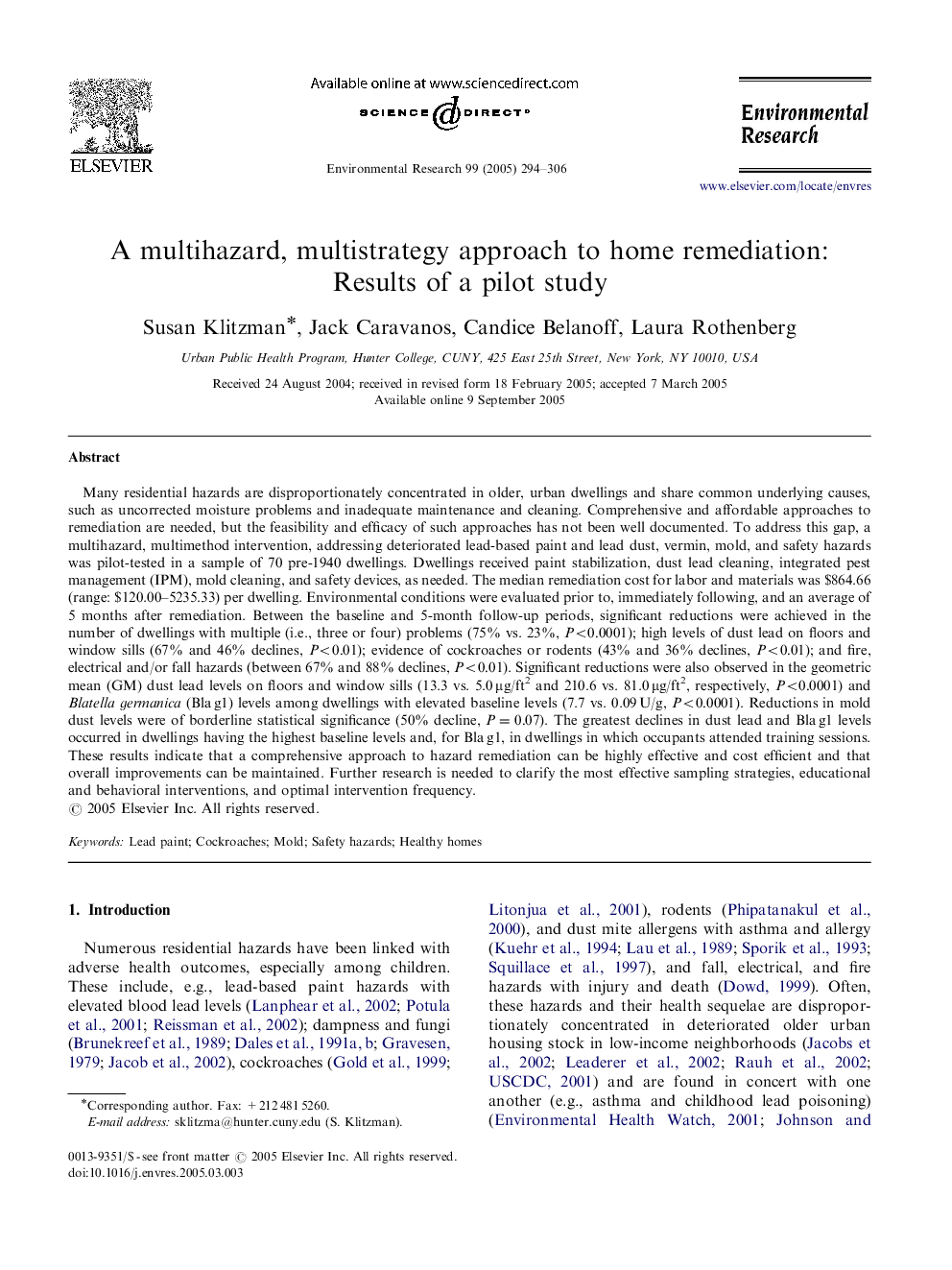| Article ID | Journal | Published Year | Pages | File Type |
|---|---|---|---|---|
| 9464795 | Environmental Research | 2005 | 13 Pages |
Abstract
Many residential hazards are disproportionately concentrated in older, urban dwellings and share common underlying causes, such as uncorrected moisture problems and inadequate maintenance and cleaning. Comprehensive and affordable approaches to remediation are needed, but the feasibility and efficacy of such approaches has not been well documented. To address this gap, a multihazard, multimethod intervention, addressing deteriorated lead-based paint and lead dust, vermin, mold, and safety hazards was pilot-tested in a sample of 70 pre-1940 dwellings. Dwellings received paint stabilization, dust lead cleaning, integrated pest management (IPM), mold cleaning, and safety devices, as needed. The median remediation cost for labor and materials was $864.66 (range: $120.00-5235.33) per dwelling. Environmental conditions were evaluated prior to, immediately following, and an average of 5 months after remediation. Between the baseline and 5-month follow-up periods, significant reductions were achieved in the number of dwellings with multiple (i.e., three or four) problems (75% vs. 23%, P<0.0001); high levels of dust lead on floors and window sills (67% and 46% declines, P<0.01); evidence of cockroaches or rodents (43% and 36% declines, P<0.01); and fire, electrical and/or fall hazards (between 67% and 88% declines, P<0.01). Significant reductions were also observed in the geometric mean (GM) dust lead levels on floors and window sills (13.3 vs. 5.0 μg/ft2 and 210.6 vs. 81.0 μg/ft2, respectively, P<0.0001) and Blatella germanica (Bla g1) levels among dwellings with elevated baseline levels (7.7 vs. 0.09 U/g, P<0.0001). Reductions in mold dust levels were of borderline statistical significance (50% decline, P=0.07). The greatest declines in dust lead and Bla g1 levels occurred in dwellings having the highest baseline levels and, for Bla g1, in dwellings in which occupants attended training sessions. These results indicate that a comprehensive approach to hazard remediation can be highly effective and cost efficient and that overall improvements can be maintained. Further research is needed to clarify the most effective sampling strategies, educational and behavioral interventions, and optimal intervention frequency.
Related Topics
Life Sciences
Environmental Science
Health, Toxicology and Mutagenesis
Authors
Susan Klitzman, Jack Caravanos, Candice Belanoff, Laura Rothenberg,
